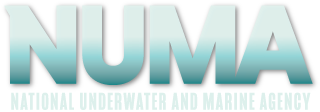Wreckmaster Articles
U-1206 Flush Ends Wartime Gamble
Even the non-poker players on the U-1206 had a sense they survived World War II because of a flush.
Tug-of-War Over a Treasure
Where to find $17 billion under the sea is hardly a secret. A tangled snarl of claims to the holy grail of treasure wrecks plus technical challenges of visiting the ship are thwarting the recovery of its prize. The San Jose is some 2,000 feet below the waters off Colombia, where it sank in a battle in 1708.
The Muse in the Sea
When the Earl of Abergavenny sank in 1805 off England’s southern coast, the death toll in the hundreds made it the nation’s worst maritime disaster. The tragedy even sank the soul of a man who was not on board, yet that might have inspired him to rise to become the poet laureate of the United Kingdom.
Fate of the Brave Ship Sterling
The Brigantine Sterling was the little ship that could and did. Yet the reward for safely sailing thousands of miles over many months to safely bring its crew and cargo to their destination was to be cast aside like a red Solo cup after a college keg party.
The Bad Ship Whydah Gally
Designed as a slave ship, the Whydah Gally was built to be bad. Then forcefully repurposed as a pirate vessel, it became arguably even worse. Yet in its mercifully short time at sea, seeds of democracy were sown among its crew.
A Tale of Three Sisters
One of a trio of ships ordered by the Canadian Pacific Railway Company, the Steam Ship Algoma was distinguished from its sisters by its short and tragic life, ending in the largest loss of life in all Great Lakes maritime disasters.
The Curse of the Mary Celeste
Bad luck must have been built into the very keel of the Mary Celeste. Dying captains, collisions and sinkings are just a start on its litany of maritime miseries, capped by being found a-sail fully provisioned in the mid-Atlantic with nary a soul on board. Not even the captain’s cat.
Terror in the bay
The Inuit hunter gatherers who eked out living in Canada’s arctic north shared stories about occasional encounters with “Kob-lu-na”, their name for European explorers who ventured into their brutally harsh homelands.
The Flight of the Dove
Life for European commoners was tough early in the nineteenth century. The Holy Roman Empire had just collapsed and political entities jockeyed to fill the power void.
Farewell to our Underwater Friend
NUMA lost a cherished friend and contributor on January 17th when David Ellsworth Boyd passed at the age of 92. Ells, as he was known to his pals, was a legend in the diving community, having explored and written about dozens of shipwrecks over his busy lifetime.
All Rights Reserved © | National Underwater and Marine Agency
All Rights Reserved © | National Underwater and Marine Agency
Web Design by Floyd Dog Design
Web Design by Floyd Dog Design
